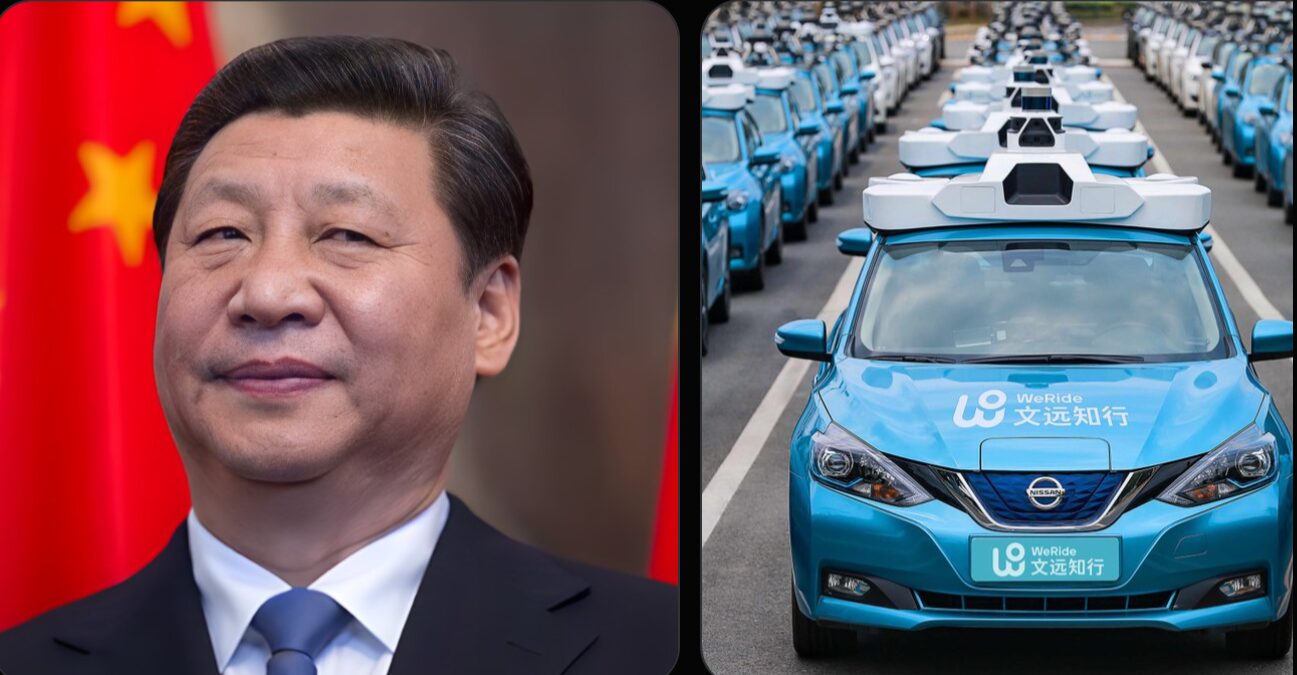CHINA’S WeRide to build a “GLOBAL ROBOTAXI EMPIRE.”
In a bold move that could redefine the future of transportation, Chinese autonomous driving company, WeRide, has announced plans to build a “global robotaxi empire.” The company, which has made significant strides in developing self-driving technologies, aims to expand its robotaxi services beyond China and into international markets. This ambitious vision could reshape the way we think about mobility, urban transport, and the role of autonomous vehicles in our daily lives.
Background of weride and the robotaxi industry
WeRide was founded in 2017 in Guangzhou, China, and has since gained attention as one of the leading players in the autonomous vehicle sector. The company’s mission is to develop self-driving solutions that will revolutionize urban mobility. By focusing on creating a safe and efficient robotaxi service, WeRide has positioned itself as a key competitor in the growing market of autonomous transportation.
The global robotaxi market, which includes self-driving cars offering shared rides, has attracted significant investment from major players like Waymo (owned by Alphabet), Uber, and Lyft. These companies are racing to develop the technology needed to make autonomous vehicles safe, reliable, and affordable for everyday use. However, WeRide has a unique advantage—its ability to tap into the rapidly developing Chinese market, where autonomous vehicle infrastructure is already being built and tested.
WeRide has already achieved success in the domestic market with its autonomous taxis, which have been operational in Guangzhou since 2019. This experience has provided the company with valuable insights into the intricacies of managing a robotaxi fleet and the challenges of operating self-driving vehicles in complex urban environments.
The global expansion plan
WeRide’s plan to build a “global robotaxi empire” is a clear signal of its intent to dominate the autonomous driving sector. The company has ambitious goals to expand its robotaxi services beyond China and enter global markets, starting with major cities in the United States, Europe, and other parts of Asia.
The expansion will rely on WeRide’s strong partnerships with automakers, technology companies, and local governments. In particular, WeRide has secured collaborations with automotive giants like Nissan and Yutong, allowing the company to leverage their resources and expertise in manufacturing and scaling autonomous vehicles. This gives WeRide a competitive edge as it looks to rapidly deploy its robotaxi fleet on a global scale.
As part of its strategy, WeRide plans to launch its robotaxi services in select international markets starting in 2025. The company has already conducted successful tests in cities like Shanghai and Guangzhou, and it is now focused on expanding its autonomous fleet to meet the needs of bustling metropolitan areas around the world. By offering a cost-effective and sustainable mode of transportation, WeRide aims to address the growing demand for smart mobility solutions in urban environments.
Technological innovation behind weride’s robotaxis
The success of WeRide’s robotaxi service hinges on the development of advanced autonomous driving technologies. The company utilizes a combination of AI, machine learning, and state-of-the-art sensors, including LiDAR (Light Detection and Ranging) systems, to enable its vehicles to navigate complex environments without human intervention.
WeRide’s autonomous vehicles are designed to handle various driving conditions, from crowded city streets to highway travel, with safety being the top priority. The company’s proprietary technology allows its vehicles to detect pedestrians, cyclists, and other vehicles, and make real-time decisions to avoid collisions. In addition, WeRide has developed an advanced fleet management system that enables remote monitoring and control of its robotaxi fleet.
The company has also focused on ensuring that its vehicles are not only technologically advanced but also user-friendly. Passengers can hail a ride via a mobile app, just like with traditional ride-hailing services. This seamless integration of autonomous driving with the existing ride-hailing infrastructure is one of the key factors that could drive the widespread adoption of WeRide’s robotaxi services.
Challenges and competition in the robotaxi space
While WeRide’s ambitions are impressive, the company faces significant challenges as it attempts to build a global robotaxi empire. The most immediate challenge is the intense competition in the autonomous vehicle sector. Companies like Waymo, Cruise (backed by General Motors), and Baidu’s Apollo are all vying for a share of the robotaxi market, with each having its own unique approach to autonomous driving technology.
Regulatory hurdles also pose a significant challenge for WeRide. Autonomous vehicles are still in the early stages of adoption, and many countries have yet to establish clear guidelines for their operation. In particular, the United States and Europe have strict regulations surrounding the testing and deployment of self-driving vehicles, which could delay the rollout of WeRide’s services in these regions.
Additionally, public perception of autonomous vehicles remains mixed. While many people are excited about the potential of self-driving cars to reduce traffic congestion and improve road safety, there are still concerns about the safety and reliability of the technology. WeRide will need to continue building trust with consumers and governments to overcome these obstacles and ensure the successful deployment of its robotaxi fleet.
The potential impact of a global robotaxi empire
If successful, WeRide’s vision of building a “global robotaxi empire” could have a transformative effect on the transportation industry. Robotaxis could offer a cleaner, more sustainable alternative to traditional cars, reducing the number of vehicles on the road and lowering carbon emissions. They could also alleviate the pressure on public transportation systems, particularly in densely populated urban areas where traffic congestion is a major issue.
Moreover, robotaxi services could create new economic opportunities by reducing the cost of transportation and creating jobs in the autonomous vehicle sector. As the technology matures, it’s possible that robotaxis could be deployed in a variety of industries, from healthcare and logistics to tourism and entertainment.
Ultimately, WeRide’s plan to expand its robotaxi services worldwide is more than just about launching a new ride-hailing service. It’s about shaping the future of mobility and establishing itself as a leader in the rapidly evolving autonomous driving market.
Final thoughts
WeRide’s ambitious goal to build a “global robotaxi empire” signals a bold step forward in the world of autonomous vehicles. The company’s global expansion plan, combined with its technological innovations and strong partnerships, positions it to become a key player in the future of transportation. While challenges remain, the potential benefits of robotaxis are vast, and WeRide is well on its way to transforming urban mobility for the better.
As the autonomous vehicle market continues to evolve, WeRide’s efforts will likely influence the direction of the industry and pave the way for other companies to follow suit. For now, all eyes are on WeRide as it works to bring its robotaxi vision to life on a global scale.

















Post Comment